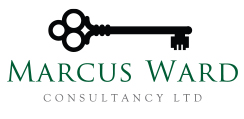Latest from the courts
In the First Tier Tribunal (FTT) case of The Trustees of Litton & Thorner Community Hall the issue was whether certain construction works were a completion of an initial build or whether they were an extension or an annex to a pre-existing building. And if an annex, whether it was capable of functioning independently from the existing building and whether there is a main access to the annex.
Background
The appellant began construction of a hall in 2008. It was intended that the hall would be available for a school to use and also for it to be available at for village use and other activities, such as by local youth clubs and a scout group. There was no dispute that the original construction was zero rated via VAT Act 1994, Schedule 8, Group 5, item 2 (The supply in the course of the construction of a building designed for a relevant charitable purpose).
A decision was made to install ground source heat pumps to feed the heating system. However the space occupied to accommodate the system meant that there was insufficient storage space in the hall. So at the time of construction, but before planning permission was obtained, it was decided with the builder that a steel joist should be incorporated within the east wall of the hall in order to facilitate the necessary support and access when the envisaged storage facility was added. The additional planning permission was granted in November 2011, three years after building work commenced. The facility was eventually able to be used when work was completed in 2014. The delay was caused (not surprisingly) by funding issues. It was the VAT treatment of work relating to the addition of the storage area which was the subject of the appeal, with HMRC considering that it was either standard rated work to the building or was a standard rated extension to it.
Technical background
The provisions relevant to the appeal are VAT Act 1994, Schedule 8, Group 5, Notes 16 and 17. It is worthwhile taking a moment to consider these in their entirety:
Note 16
For the purpose of this Group, the construction of a building does not include
(a ) the conversion, reconstruction or alteration of an existing building; or
(b) any enlargement of, or extension to, an existing building except to the extent the enlargement or extension creates an additional dwelling or dwellings; or
(c) subject to Note (17) below, the construction of an annexe to an existing building.
Note 17
Note 16(c) above shall not apply where the whole or a part of an annexe is intended for use solely for a relevant charitable purpose and;
(a) the annexe is capable of functioning independently from the existing building; and
(b) the only access or where there is more than one means of access, the main access to:
(i) the annexe is not via the existing building; and
(ii) the existing building is not via the annexe.
The Appeal
The Trustees appealed on two separate and distinct bases:
(1) That the additional building was the completion of the original building and neither an extension nor an annex to it. It was their case that the temporal disconnect between the two building processes must be seen in the factual context, with particular reference to the decision to put in a lintel to allow the building to be completed when additional monies and planning permission were available. Additionally, alongside this fact was that the appellant was a non-commercial organisation and so things could not progress as expeditiously as they might have done if those things were being undertaken by a commercial organisation.
(2) The second basis is that, in any event, the additional building is zero rated by reference to paragraphs 16(c) and 17 of Group 5 to Schedule 8. It was the appellant’s case that the additional building is an annex intended for use solely for relevant charitable purposes and it meets the conditions set out in paragraph 17(a) & (b).
Decision
The FTT decided that the work was subject to zero rating. Not only was it part of the original construction (albeit that there was a significant time period between the building original work and the work on the storage area) but also, even if the storage area is considered as being separate, it was ruled that, on the facts, it was an annex rather than an extension, so it also qualified for zero rating on this basis.
Commentary
The date a building is “completed” is often an issue which creates significant disputes with HMRC, not only for charities, but for “regular” housebuilders. I have also encountered the distinction between an annex and an extension representing a very real topic, especially with academy schools. Even small changes in circumstances can create differing VAT outcomes. My advice is to seek assistance form a VAT consultant at the earliest stage possible. It may be that with a slight amendment to plans, zero rating may be obtained in order to avoid an extra 20% on building costs which charities, more often than not, are unable to reclaim.
Links to what we can offer to schools here, and charities here
Additionally, our offering to the construction industry here
